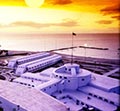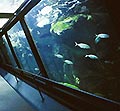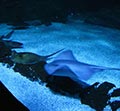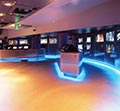Aquarius 'Le Navi' Cattolica
Beaches
Fun and Nightlife
Visit Cattolica
- The history of Cattolica and its traditions
- The town hall
- The dancing fountains of 1° Maggio square
- The town centre
- The historical centre
- The Regina museum
- The Market square
- The multi-cultural centre
- The Regina theatre
- The churches
- The walk along via Dante
- The beach and the sea front
- The harbour
- The water park "Le Navi"
Inland
Search on cattolica hotel
The water park 'Le Navi'

Navy Cologne
At the beginning of the 30s the Foundation "Figli del Littorio" (Littorio's sons) under the General Management of the "Figli degli italiani all'estero" (The sons of Italians abroad), commissioned the Roman architect and engineer Clemente Busiri Vici to design a beach colony to be built in the north west of Cattolica in an area situated between the Ventena and the Conca rivers.
Today "Le Navi", have been restructured and reopened, and is the site of a modern aquarium that represents an important tourist and cultural attraction of the town.

The theme park
Inside "Le Navi" three distinctive themed workshops have been designed. "Geopolis" is a monitoring lab and study centre of the planet. This lab can be accessed by a virtual lift which takes you 3,200 metres underground. Through a long internal path you can ascend to the surface and then from the sea abyss you can reach an imaginary platform where among enormous pillars different species of sharks swim around.

Specimens from all over the world
"Acquapolis" is the second themed workshop and its objective is the observation and study of marine flora and fauna. It occupies the former dormitories of the colony one facing westwards and the other eastwards. Without modifying the original section the change of use has been solved by introducing on the ground floor of the two buildings a glass tunnel of pentagonal shape which acts as a underground passage for the public.
The space between this tunnel and the external walls, up to the galleries above, have been transformed into a big pool. The galleries have hence become service tunnels used for inspections, pool care and feeding for the hosted species of fish. This lab is a continual passage through the eco-systems of the Mediterranean sea. Illustrating more than 400 exemplary species of the Mediterranean and tropical seas, which are kept in about 50 display pools.

Latest technology
The third workshop Archeopolis is situated in the "Maestrale", where all the marine studies are carried out, dedicated to anthropological and archaeological aspects. Here the experience is truly multi-medial. In a technological lobby, numerous monitors link the visitor with different archaeological and marine sites, showing techniques, methods and instrumentations used by the researchers to conduct their studies.
A large map of the sites highlights the most important archaeological findings in the Mediterranean sea.
Video
Links
Weather Forecast

Want to know the weather forecast in the coming days?
Visit the weather section.
Sponsor Hotels
 Deutsch
Deutsch English
English
 Francais
Francais Italiano
Italiano




